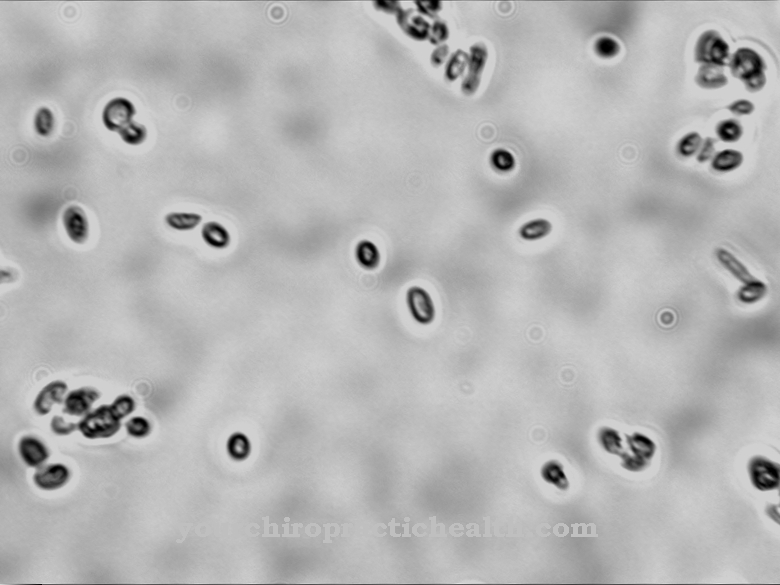Herpes diseases are diverse and noticeable in a wide variety of ways. The most popular Herpes virus manifests itself in burning blisters, mostly in the corners of the mouth. They are uncomfortable and often return despite professional treatment. However, there is not just one herpes virus, there are many different herpes viruses.
What are herpes viruses?
The stubborn herpes viruses can be divided into three groups. Alpha, beta and gamma herpes viruses lead to diseases of the skin and mucous membranes, the eyes or the nervous system. They can also be responsible for tumor formation.
Eight herpes viruses are threatening to humans. Especially with initial infections it can happen that the person concerned does not attribute his illness to herpes viruses, because these make themselves noticeable in an atypical framework. It is also possible to carry the virus without it breaking out and expressing symptoms typical of the disease. Worldwide, 85 percent of the population carry the HSV-1 virus.
Herpes viruses have double-stranded DNA and a size of about 150-200 nm in diameter. They have been evolving for 200 million years, making them an old family of viruses. In doing so, they not only infect humans, but also animals. The viruses are spread by the droplet infection.
Meaning & function
In the primary infection of alpha herpes viruses, the epithelial cells, i.e. the skin and mucous membranes, are infected first. The affected cells die as the virus spreads widely throughout the body. Now the immune system appears, which tries to contain the virus infection.
Before this happens, however, the HSV viruses have already infected nerve cells, the ganglion cells. The immune system now manages to control most of the viruses and the infection heals. However, some viruses remain in the nucleus of the neurons, where the immune system cannot fight them. Because they have never left the body, the infection can be reactivated at any time.
When the symptoms appear, a distinction is made between an initial infection and reactivation of the herpes viruses. Once the viruses have reached the spinal ganglia, they remain there for the life of the host. Reactivation is often triggered by stress, fever, lack of sleep and UV light.
If the person concerned carries a herpes virus without developing outbreaks, this is called latent infection, the virus genome is silent. Herpes viruses are responsible for a variety of diseases that can threaten human health. They are wide-ranging and can interact with other pathogens, causing serious illnesses.
Many people are infected with the virus in childhood. While symptoms can be treated and the infection contained, it has so far been impossible to banish the herpes viruses from the body. A new outbreak can then be expected at any time.
Illnesses & ailments
Herpes viruses often make themselves noticeable through the formation of blisters. These can occur on the lips and nose, but also on the genitals, buttocks, conjunctiva, oral mucosa or on the face and cheeks. The viruses can lead to death if the course is very severe. However, since it is not in the virus' s interest to kill its host, deaths are relatively rare.
Viral diseases can also affect the liver and [[brain], where they trigger autoimmune processes. The HHV-1 virus, which mostly appears in the form of vesicles, is one of the most harmless. In extremely rare cases, however, it can also lead to paralysis, seizures, fever and coma, which, if left untreated, lead to death in 70 percent of cases.
Genital herpes, HHV2, runs without complications in healthy people and the risk of infection is lower than that of the HI virus. HHV-6 has also been linked to multiple sclerosis. It affects the T cells and changes the central nervous system in the process. If it comes into contact with other pathogens, multiple sclerosis can develop. HHV-6 is particularly common in people with autoimmune connective tissue disease.
Other diseases that are caused by the herpes viruses are chickenpox and shingles. If they occur in the form of chickenpox, some viruses migrate to the vicinity of the spine, where they remain in nerve cells and are usually only reactivated in adulthood. The infection that now occurs is shingles, which is accompanied by a slight fever and reddened spots and nodules, some of which cause considerable pain.
Pfeiffer's glandular fever can also be traced back to one of the different herpes viruses, the Epstein-Barr virus. During the infection, the body makes antibodies, which prevents re-infection because the body has become immune. Swelling of the lymph nodes in the throat and neck, fever, difficulty swallowing, tiredness and difficulty concentrating are typical of glandular fever. The Epstein-Barr virus is the HHV4 herpes virus.
Herpes viruses are often only associated with blistering, but their true extent is far greater.


























